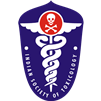Cardiac Vitals: Not to be Missed in the Intensive Management of Organophosphorus Compound Poisoning
Keywords:
Organophosphorus compound; Pesticide; Cholinergic syndrome; Creatine phosphokinase-MB; CPK-MBAbstract
Background - The importance of cardiac complications in organophosphorus compound (OPC) poisoning are not adequately appreciated by treating physicians. Most of such complications occur during the initial hours following exposure. Once the condition is recognized, immediate transfer to intensive care unit must be undertaken where appropriate resuscitative and monitoring facilities are available.
Aims and Objectives - To study the clinical profile of OPC poisoning with particular reference to the cardiovascular system.
Materials and Methods - This is a prospective study in which 22 patients presenting to the emergency department with deliberate or accidental ingestion of OPC were included as subjects. Data regarding clinical and biochemical profiles were recorded as per pre-structured proforma. In addition to routine investigations, CPK-MB levels and electrocardiogram were recorded in all these patients.
Results – Of the 22 cases, males (15, i.e., 68.18%) outnumbered females (7, i.e., 31.82%). Majority were in the age group 15–34 years (15, i.e., 68.18%). Miosis was present in19 cases (86.36%), frothing from the mouth in 17 (77.27%), and diarrhoea in 13 (59.09%). Leucocytosis was observed in 9 (40.91%), deranged renal profile in 2 (9%), elevated liver enzymes in 3 (14%), and raised CPK-MB levels in 7 (31.82%). ECG changes were present in 20 cases (90.90%). Mortality was 3 (13.64%). Conclusion – OP poisoning is more common in males, and that too in the most productive age group. In the absence of reliable history, diagnosis can be made by the typical clinical profile associated with OP poisoning (cholinergic syndrome). OP poisoning can involve kidneys, heart, and liver in addition to its well known effects on the lungs and the central nervous system. Recognizing early cardiac abnormalities may avert death by timely admission to intensive care unit with resuscitative and monitoring facilities.



